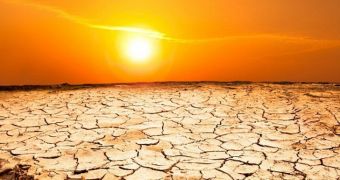As of recently, Australia's southern regions have experienced a considerable decline in rainfall both during autumn and throughout winter. As it turns out, this shift in local weather patterns is due to greenhouse gas emissions.
The phenomenon is documented in a paper authored by researchers with the National Oceanic and Atmospheric Administration in the United States and published in the journal Nature Geoscience this July 13.
In this paper, scientists explain that, according to data at hand, it was back in the 1970s that Australia's southern regions first started experiencing a drop in local autumn and winter rainfall. Over the years, things took a turn for the worse.
What's more, the specialists who conducted this investigation maintain that, all things considered, chances are that rainfall will continue to decline in said parts of Australia in the years to come, EurekAlert informs.
In fact, it is estimated that, judging by how things are going, a 40% drop in local rainfall will be documented in southwest Australia by the end of the 21th century. This will greatly affect water availability.
Looking to pin down the underlying cause of this phenomenon, scientists with the National Oceanic and Atmospheric Administration pieced together and then analyzed several climate simulations concerning long-term changes in rainfall.
“This new high-resolution climate model is able to simulate regional-scale precipitation with considerably improved accuracy compared to previous generation models,” explains research scientist Tom Delworth.
“This model is a major step forward in our effort to improve the prediction of regional climate change, particularly involving water resources,” the specialist further comments on the perks of using this technology to study weather and climate.
The climate simulations have led them to the conclusion that, although volcano eruptions and shifts in the sun's radiation could too influence weather patterns and especially rain, it is man-made greenhouse gas emissions that best explain what has been happening in southern Australia.
As blame-worthy as greenhouse gas emissions might be, it appears that a thinning of the ozone layer has also had a say in the matter. As detailed in the journal Nature Geoscience, this thinning is also man-made, meaning that it is the result of having one too many aerosol emissions hovering over our heads.
Commenting on the importance of identifying the underlying cause for southern Australia's decline in rainfall, Tom Delworth has pointed out that, “Predicting potential future changes in water resources, including drought, are an immense societal challenge.”
Furthermore, “This new climate model will help us more accurately and quickly provide resource planners with environmental intelligence at the regional level. The study of Australian drought helps to validate this new model, and thus builds confidence in this model for ongoing studies of North American drought.”

 14 DAY TRIAL //
14 DAY TRIAL //